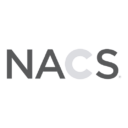
Insights
Orchestrating Success: How Merchants Can Better Capitalize on the Benefits of Payment Orchestration

As the complexity of managing multiple payment channels and services continues to evolve, the concept of payment orchestration has garnered increasing attention in the merchant community. Despite this growing interest, there has been a notable lag in actual implementation of orchestration capabilities. This article will explore what payment orchestration is, why it’s relevant to merchants, and how to overcome the challenges to effective orchestration.
What is Payment Orchestration and Why Is It Relevant to Merchants?
Payment orchestration refers to the process of integrating and managing multiple payment services and channels within a single, unified platform. For merchants, this can mean consolidating acquirers, gateways, and other payment service providers into one streamlined solution, potentially simplifying operations, enhancing customer experience, and reducing costs.
The relevance of payment orchestration lies in its ability to optimize and automate the payment process. Steve Bauer, Principal Consultant at W. Capra, expounds: “As the payments landscape becomes increasingly fragmented, with varying requirements across regions and channels, the ability to orchestrate these elements efficiently can provide a significant competitive advantage through enhancing the customer journey. For example, a merchant operating globally may need to manage different gateways, comply with PCI-DSS and GDPR standards, and ensure seamless transaction processing across multiple currencies. Payment orchestration platforms, when implemented effectively, can simplify and resolve these complexities on behalf of merchants while introducing operational efficiencies that allow the merchant to focus on their core business and delivering a streamlined customer experience.”
Overcoming Challenges to Effective Orchestration
While the concept of payment orchestration is appealing, its implementation presents several challenges. A primary concern among merchants, particularly in the Card Present space, is skepticism about the current product offerings. Many merchants feel that existing orchestration solutions are not fully equipped to support omnichannel businesses, which require a seamless integration of online and offline payment channels.
Pat Behrens, Payment Architecture Lead at W. Capra, adds, “The complexity of orchestration itself can be daunting. Each merchant’s environment is unique, and the orchestration solution must be tailored to fit specific needs. A given solution may need to consolidate fraud services, manage multiple gateways across different countries, or navigate various data privacy regulations. This customization requires a deep understanding of the merchant’s goals and existing infrastructure. This is why W. Capra takes the time to understand a merchant’s full operations— by introducing something like unified payment reporting through orchestration, we can ease internal stress elsewhere in the organization.”
Another challenge is the perceived risk associated with relying on a single orchestration platform. Merchants are concerned about the reliability and uptime of these services, particularly when processing high volumes of transactions. In addition, the ability to manage soft declines, optimize routing, and maintain a high level of customer experience across different channels are critical aspects that need careful consideration.
A Conductor Is Not an Instructor
The term orchestration is fitting, not only in reference to its complexity and coordination, but in the craft required to perform. Just as you wouldn’t attempt a Bach concerto without proper guidance, it’s essential to solicit the right expertise to orchestrate payments effectively. More than having the right orchestration provider in place, a successful implementation requires guidance from the subject matter experts.
W. Capra has the market-tested experience to help merchants navigate the orchestration landscape by setting clear expectations and making the process more approachable in several key areas:
- Discovery and Gap Analysis: Through interviews and discovery sessions, we assess a merchant’s current systems and processes to identify areas for improvement without interrupting the rhythm of business to produce a baseline assessment. This might include evaluating existing payment channels, vetting organizational goals, or determining how orchestration can address specific pain points.
- Strategic Planning and Rollout: Developing a clear strategy for payment orchestration is essential. W. Capra can help merchants organize and deliver a comprehensive plan that includes a rollout and readiness strategy for different channels, ensuring that all aspects of the payment process are optimized for efficiency and customer satisfaction.
- Building and Monitoring ROI Models: It’s important to have a realistic understanding of the return on investment (ROI) when implementing payment orchestration. W. Capra’s proven models can help you determine the continuous effectiveness of your orchestration solution, identifying cost inflection points and adjusting as needed to maximize value.
- Managed Services: Payment orchestration involves placing a portion of your business logic and rules in the hands of your solution provider(s). These rules require continual optimization and updating to remain effective as customer and market demands change. W. Capra’s managed service model ensures that the orchestration platform continues to meet your organization’s needs, including monitoring the reliability, uptime, and performance of your payment stack.
For those merchants interested in the potential benefits they can unlock through efficient orchestration, there is no need to be daunted by implementation if you have the right guidance and partnership. By understanding the potential benefits and risks, and by engaging with the experts at W. Capra who can provide tailored guidance, merchants can unlock the full potential of payment orchestration.
Pat Behrens and Steve Bauer are passionate about driving successful payment experience for their clients and their customers. For further discussion, contact Pat at pbehrens@wcapra.com or Steve at sbauer@wcapra.com.
Related Insights
Prepping for the End of Year, Holidays, and 2025
As each year ends, merchants are forced to deal with the scramble related to holiday season sales and offers which […]
Is Walmart’s Real-Time Payments Offer Going to be a Market Mover?
It was recently announced that Walmart will be working with Fiserv to implement real-time payments for their customers using Fiserv’s […]
Visa Sued for Monopolizing Debit Markets
While the ghost of the “Credit Card Competition Act of 2023” still lurks in Congress, the US government furthered […]
The Future of PCI DSS Scoping and Segmentation: What’s Changed?
Addressing Modern Network Challenges with PCI Security Standards Council’s New GuidelinesWritten by Josh Kennedy, W. Capra Senior PCI Consultant […]
Want to stay in touch? Subscribe to the Newsletter












